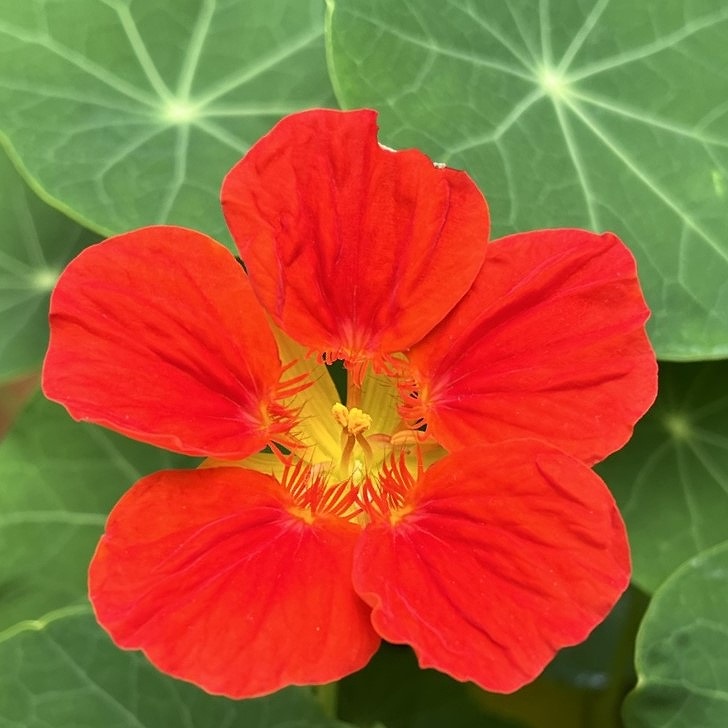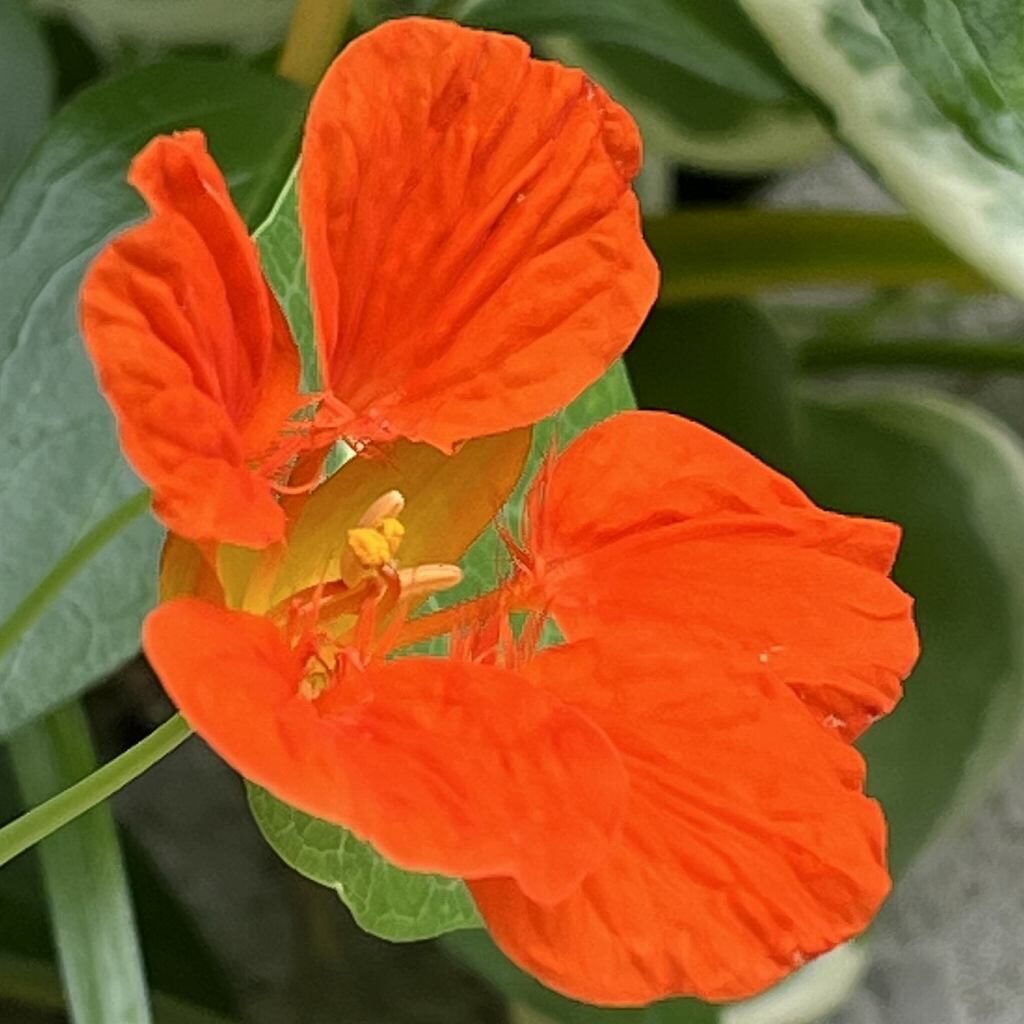キンレンカの和名「金蓮花」の由来は葉が蓮に似ていて、花が黄金色だから。花は鮮やかな暖色系で芳香があり、茎葉は薬効もある野菜です。
The origin of the Japanese name of Garden Nasturtium, “golden lotus flower”, is that the leaves resemble lotus and the flowers are golden. The flowers are brightly colored and fragrant, and the stems and leaves are a vegetable with medicinal properties.
【仮名】キンレンカ, ナスタチウム
【和名】金蓮花
【英名】Garden Nasturtium, Nasturtium
【学名】Tropaeolum majus
【誕生】04/ 06, 05/ 07, 05/ 11
【開花】05, 06, 07, 09, 10, 11月
【花色】Pink, Red, Yellow, Orange



キンレンカ
キンレンカの来歴
キンレンカはノウゼンハレン科の1年草です。原産地は南米のペルー、コロンビア、ブラジルで約80種が分布。おもな原種が熱帯高地に自生していたため、夏の暑さも冬の寒さも苦手です。日本へは江戸時代の末期に渡来。花は鮮やかな暖色系で芳香があり、茎葉は薬効もある野菜です。
キンレンカの名前
キンレンカの和名の由来は葉が蓮に似ていて、花が黄金色だから。別名の「凌霄葉蓮」は花が凌霄葛に似ているからです。英名のナスタチウムはラテン語で「鼻が曲がる」という意味。食べると辛味があるからです。アブラナ科オランダガラシ属の学名と同じなのは食味が似ていたため。
キンレンカの学名
キンレンカのラテン語の属名トロパエオルムは「戦利品」という意味。葉の形が楯に、花の形が兜に見えるからです。そのため、花言葉も「勝利」「困難に打ち克つ」。そこに「愛国心」「忠誠心」、さらに「恋の炎」「恋の火」が加わります。種名マユスは「より大きい」という意味。
キンレンカの姿形
キンレンカの茎は多肉質の蔓性です。葉は柄が長く、円形で互生。白い葉脈が真ん中から放射状に走ります。花も柄が長く、一重咲きから八重咲きまで。花弁5枚のうち、上2枚の内側に毛がなく、下3枚に毛がある系統は後ろに細長い距が伸び、すべて毛がある系統は距が伸びません。
キンレンカの食用
キンレンカの花や蕾は料理に彩りを添えるエディブルフラワーです。若い茎葉はピリッとしたクレソンのような風味。ビタミンCも豊富でサラダやスープなどで食べられます。花後の未熟種子も塩漬けなどに。かつては胃腸の働きを整えたり、貧血を改善する野菜として用いられました。
Garden Nasturtium
Garden Nasturtium is an annual herb of the family Tropaeolaceae. About 80 species are distributed in Peru, Colombia and Brazil in South America. Since the main species grew naturally in the tropical highlands, they do not like the heat of summer and the cold of winter. Came to Japan at the end of the Edo period. The flowers are brightly colored and fragrant, and the stems and leaves are a vegetable with medicinal properties.
The origin of the Japanese name of Garden Nasturtium is that the leaves resemble lotus and the flowers are golden yellow. It is also known as “the lotus leaf that rises to the sky” because it resembles a flower that rises to the sky. The English name Nasturtium means “curved nose” in Latin. Because it tastes spicy when eaten. Their name is the same as that of the genus Nasturtium of the Brassicaceae family because of their similar taste.
The Latin genus Tropaeorum of Garden Nasturtium means “booty.” This is because the shape of the leaf looks like a shield, and the shape of the flower looks like a helmet. Therefore, the flower language is also “victory” and “overcoming difficulties”. “Patriotism”, “Loyalty”, “Flame of Love” and “Fire of Love” are added there. The species name Majus means “bigger”.
Garden Nasturtium stems are fleshy vines. The leaves are long-stalked, circular and alternate. White veins radiate from the center. The flowers are also long-stalked and there are single to double blooms. Of the five petals, those with no hairs on the top two and hairs on the bottom three have elongated spurs at the back, and those with hairs on all five do not have long spurs.
Garden Nasturtium flowers and buds are edible flowers that add color to dishes. Young stems and leaves have a tangy, watercress-like flavor. It is rich in vitamin C and can be eaten in salads and soups. Immature seeds after flowering can also be pickled in salt. In the past, it was used as a vegetable to improve gastrointestinal function and improve anemia.


